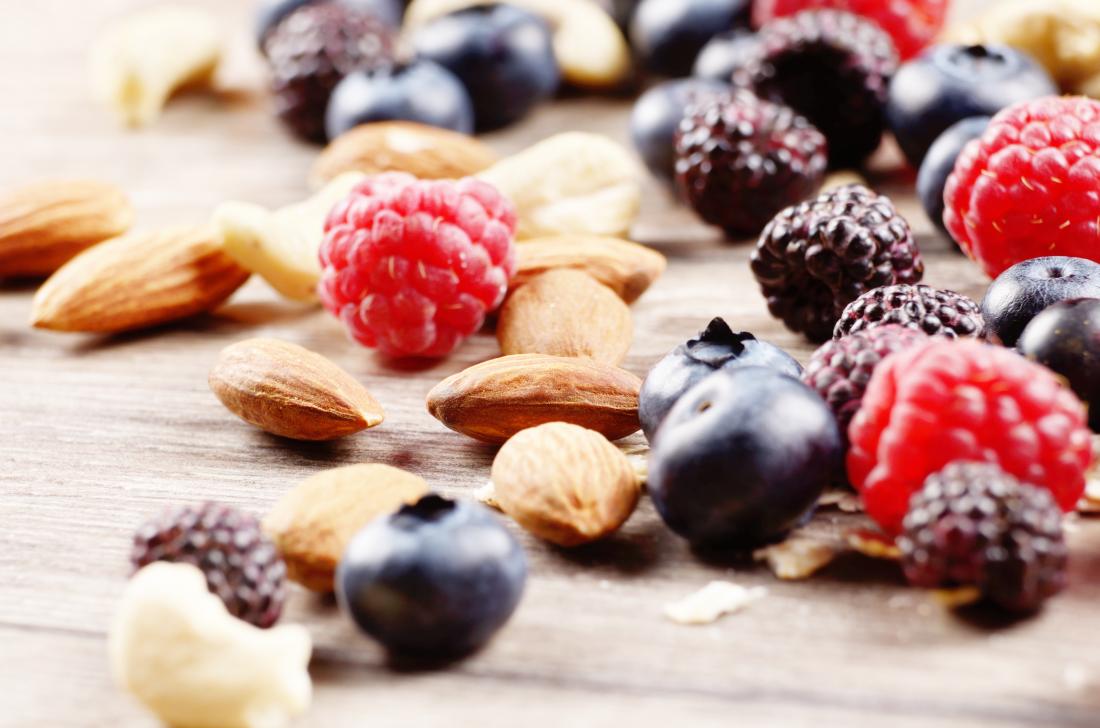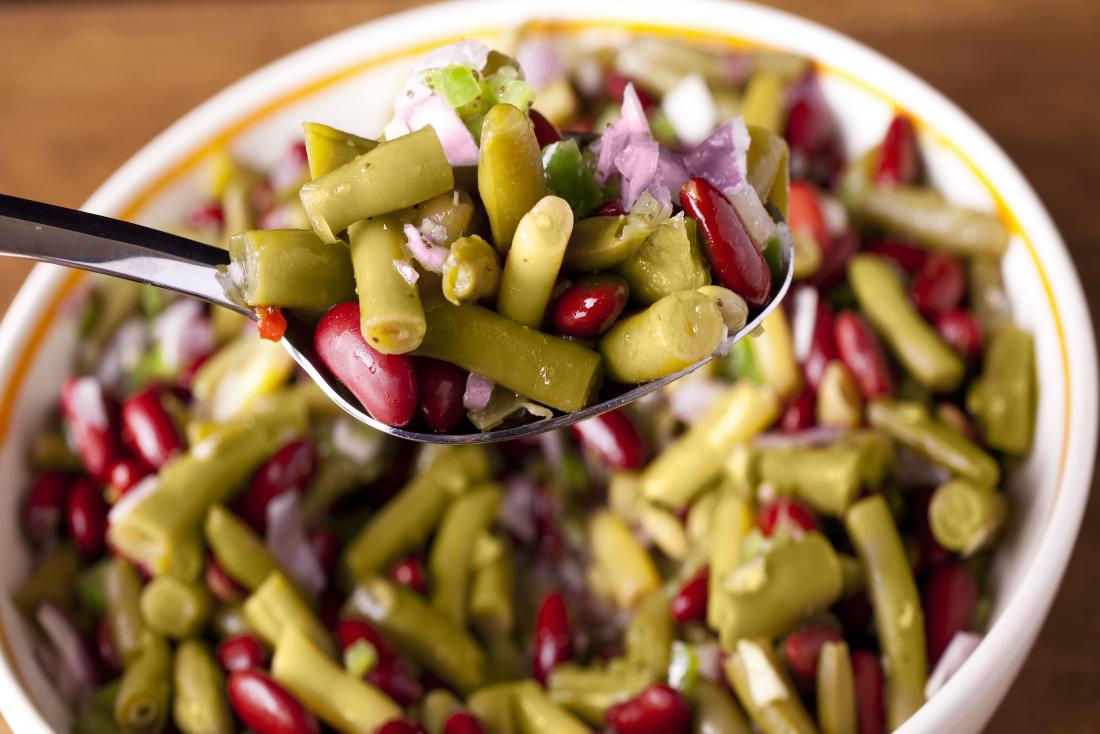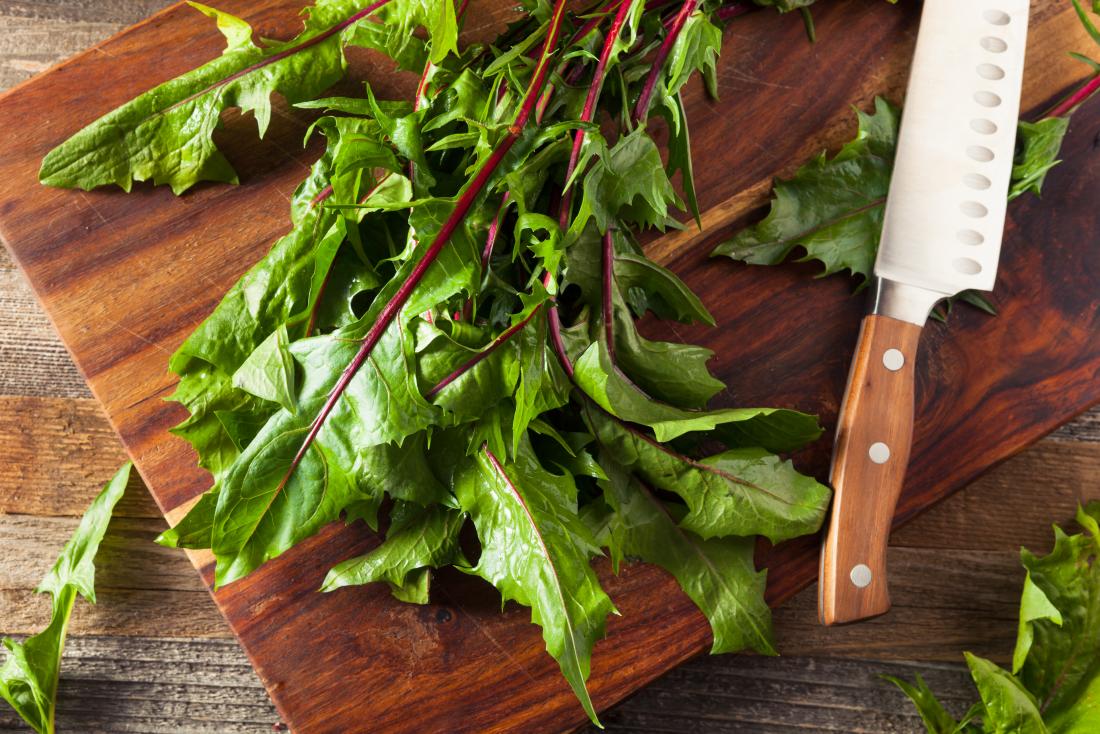Examples of nutrient-dense foods include legumes and nuts, which are an excellent source of protein for those following vegetarian or vegan diets. Quinoa and sweet potato also provide plenty of nutrients for their calorie count and can be healthful alternatives to white bread or rice as a source of carbohydrate.
In this article, we discuss some of the most nutrient-dense foods available.
Nuts

Nuts and berries are high in nutrients but comparatively low in calories.
Nuts are very nutritious as they have a high proportion of monounsaturated fats. These healthful types of fat are essential to a range of bodily functions, such as cell growth and protecting organs. They are different in structure than saturated and trans fats, which are unhealthful fats.
Nuts are also high in protein and contain a range of other nutrients, including:
The most healthful types of nut are unsalted almonds, pistachios, and walnuts. Nuts are easy to incorporate into a healthful diet as a topping on salads and vegetables or as a snack between meals.
Sweet potato
Sweet potatoes are an excellent source of energy and nutrients.
They are high in complex carbohydrates. This type of carbohydrate takes longer to break down than simple carbohydrates, which include refined sugars. As a result, sweet potatoes are a lasting source of energy.
Sweet potatoes contain a range of other nutrients, such as vitamins A, B-6, and C. They also contain antioxidants, such as beta carotene. Antioxidants are compounds that have several health benefits and may reduce the risk of chronic conditions, such as cancer.
It is possible to boil, roast, or fry sweet potato as either a side dish or part of the main course. However, to minimize the rise in blood sugar levels, it is best to boil rather than bake a sweet potato and to eat the skin.
Salmon
Salmon is an oily fish that offers a variety of health benefits.
Every 100 grams (g) of wild Atlantic salmon contains about 20 g of protein, making it an excellent source of this nutrient. Protein acts as an energy source and supports a range of bodily functions, such as building and repairing cells and body tissue. It is an essential nutrient for human health, which means that the body requires it to function but cannot produce a sufficient amount itself.
Another essential nutrient that salmon provides is omega-3 fatty acids. In addition to supporting various functions of the body, omega-3 fatty acids may reduce the risk of heart disease.
Salmon is also a good source of minerals, including magnesium, potassium, and selenium, and it is rich in vitamins B-12 and D.
Smoked salmon can boost the nutritional content of a salad, or people can eat it as a topping on cucumber slices.
Legumes

Legumes are a good plant-based source of protein for vegetarians and vegans.
Legumes, or pulses, are a food group that includes:
- beans
- peas
- lentils
- soybeans
- peanuts
These foods are high in dietary fiber, which is important for digestive health. They are also one of the best plant-based protein sources, making them suitable for a vegan or vegetarian diet.
Legumes are another complex carbohydrate that can provide lasting energy to the body, but they also have a low glycemic index and load. This characteristic means that the body can convert legumes into energy without causing a spike in blood glucose levels, which can help people prevent or manage diabetes.
Legumes also contain vitamin B, antioxidants, and several minerals, such as iron, calcium, and magnesium.
It is possible to cook different types of legume together as the primary source of protein in a vegetarian meal. As beans contain phytates, lectins, and other antinutrients, which affect the body’s ability to absorb nutrients, it is best to soak and pressure-cook them to reduce the antinutrient content.
Kale
Kale is a highly nutritious, leafy-green vegetable that belongs to the cruciferous family.
It contains dietary fiber, protein, and several antioxidants, including beta carotene.
This vegetable also contains a large amount of vitamins A, C, and K. Vitamin K is important for bone and tissue health, and it supports other bodily processes, such as blood clotting. It is less common than vitamins A and C but occurs naturally in kale and other leafy-green vegetables.
Kale can make an excellent addition to any salad or smoothie, or people can sauté it. Baby kale is more tender than the mature plants and may be a more palatable choice.
Quinoa
Quinoa is a South American whole grain with an excellent nutritional profile.
It contains complex carbohydrates, so it acts as a good energy source. Unlike many other sources of carbohydrate, quinoa also contains a good proportion of other nutrients.
This grain is relatively high in protein and fiber. Cooked quinoa contains around 4.4 g of protein and 2.8 g of fiber per 100 g.
Quinoa is also rich in minerals, such as magnesium and phosphorus, and it contains several B vitamins.
Quinoa can replace rice or pasta as the primary source of carbohydrates in a meal. It is important to rinse quinoa well with a fine-meshed strainer to remove the outer layer, which contains bitter-tasting compounds called saponins.
This grain will cook on the stove or in a rice-cooker within 15 minutes. Anyone who has concerns about lectin intake from grains and pseudograins, such as quinoa, should use a pressure cooker instead.
Berries
Many types of berry are among the most nutritious fruits.
Berries have one of the highest polyphenol contents of all foods and drinks. Polyphenols are plant-based antioxidants that could help prevent a wide range of chronic health conditions. Berries are rich in a polyphenol called anthocyanin, which may have metabolic benefits.
Studies have also found berries to have a beneficial effect on the management of blood glucose and the prevention of heart disease.
Berries are rich in fiber, vitamins, and minerals, including vitamin C, vitamin K, and manganese.
These fruits work well in a smoothie, or people can eat them on their own as a tasty snack.
Dandelion greens

A person can boil dandelion greens to reduce bitterness.
Dandelion greens are another highly nutritious leafy-green vegetable.
They contain many of the same nutrients as kale. One cup of chopped dandelion greens contains large amounts of vitamins A, C, and E as well as 428.1 micrograms of vitamin K.
Dandelion greens also contain several minerals, including calcium, iron, magnesium, and potassium.
It is best to boil dandelion greens to reduce their bitterness. They go well with other vegetables as a side dish.
Conclusion
A more nutritious diet has enormous benefits for health and can reduce the risk of various chronic health conditions, such as heart disease and diabetes.
There are different types of nutrient, including protein, vitamins, and antioxidants, each of which serves a different purpose in the body. The best nutrient-dense foods for a person to incorporate into their diet may depend on the foods that make up the rest of their diet.
